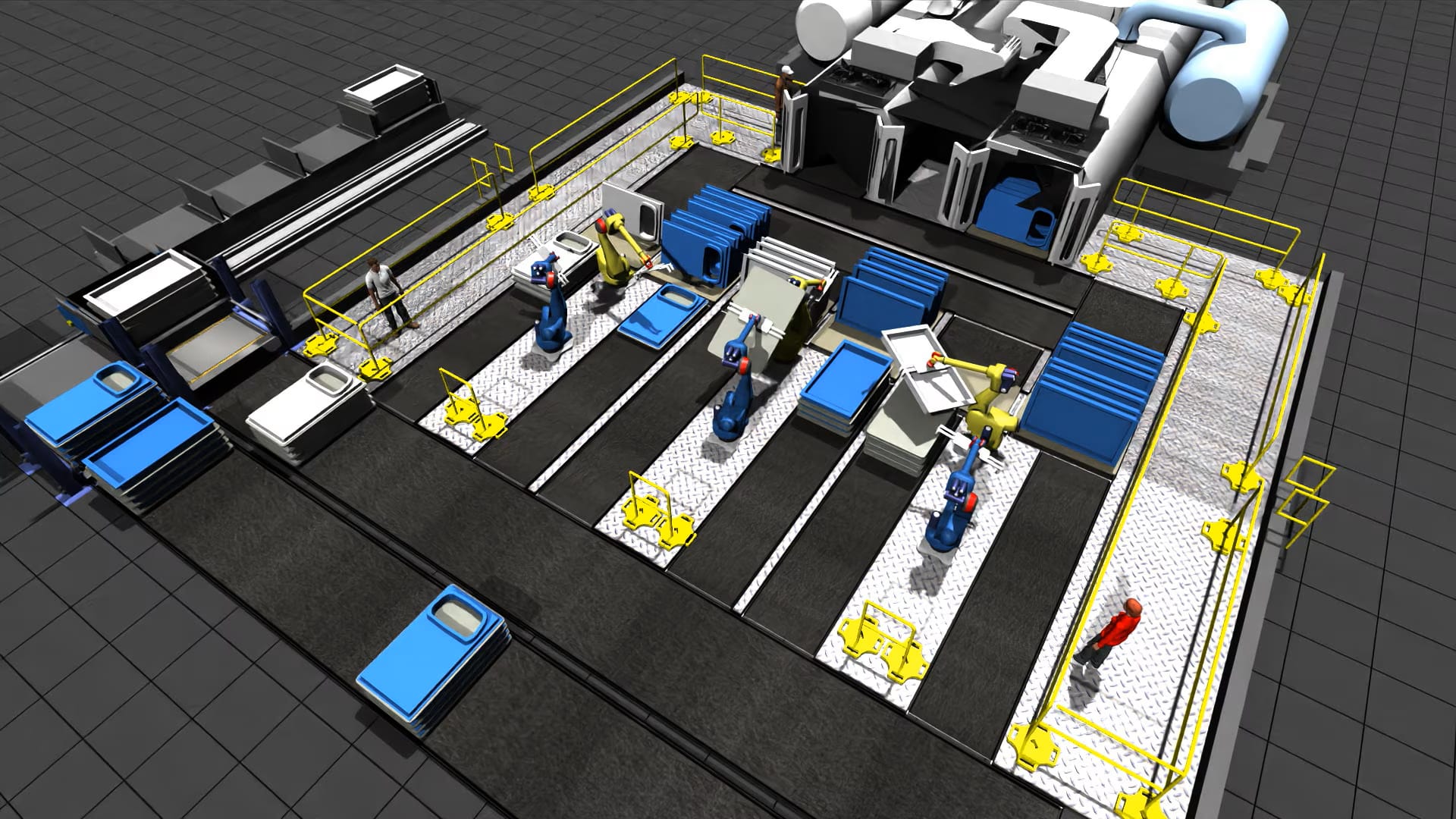The Autodesk Inventor Nesting Utility 2019.1 has many enhancements which make the nesting utility process more intuitive. This update also includes some bug fixes. Full details for the update can be found in the “Read Me” but one of the major enhancements is the ability to nest Inventor part sketches, parts, assemblies containing both sheet metal components and regular part components or just part components. The ability to nest AutoCAD DWG files, containing a closed profile, has also been added.
Let's start with an Inventor part that contains:
- An extrusion with fillet features added (yellow)
- An unconsumed sketch
- An extrusion with fillets added to extrusion sketch (green)
Normally, the three components would likely be included as different parts. But in this example, I combined them to point out some of the new rules of part nesting.
The first configuration in part nesting is to declare the “Nesting Thickness”. Because this is not a sheet metal part, the thickness is not an automatic parameter and must be declared. If the part contains an extrusion where “Extents” is set to “Distance”, this nesting thickness configuration is done automatically. If another extrusion “Extents” method has been used or the part only contains an unconsumed sketch, this configuration must be done manually by right clicking on the part-name at the top of the Model panel and selecting “Nesting Thickness” from the context menu.
After entering the nesting thickness in the dialog box and clicking “OK”, Inventor will create a parameter which holds the value for all object types in the part file which will be transferred automatically to the nesting template “Process Material Library”. This transfer will occur even if your nesting template already contains a Process Material of the same thickness.
The nesting utility will automatically select the first unconsumed sketch or the first extrusion of the part to use as the nesting shape. If two or more qualifying objects are in the same part file, it will select the first one only. If desired, you can right click on another extrusion or unconsumed sketch in the part and select “Use for Nesting” and override the automatic selection rule. It is also important to remember that if an unconsumed sketch has been selected to be used for nesting, it must be visible in the Model panel to be picked up by the nesting utility.
When using an extrusion as the nesting profile all features to be carried over to the nesting utility must be included in the extrusion sketch. Any added part features will be ignored. For example, the fillets on the yellow extrusion have been added as features and will not carry over into the nesting utility but the green extrusion fillets were added to the extrusion sketch and will be a part of the nesting utility profile.
Inventor assemblies containing sheet metal parts, component parts and part with sketches can be used as a source by the nesting utility. As long as the sheet metal part has a developed flat pattern and each part has a designated sketch or extrusion to be used for nesting, the nesting process will be successful. If the template used has a Process Material Library containing the sheet metal material, it will be used. The part components will use the previous assign “Nesting Thickness”. Also note that if the assembly contains more than one instance of a part, the nesting utility will automatically count the instance quantity and add it to the nesting properties. The assembly below contains an example of all of these types of components. Please note the Nesting Properties table shows two new Process Materials have been added for the parts, and the existing Process Material has been assigned. Also note that the count for the duplicate parts has been assigned to 2.
The nesting process can be activated by opening a new nesting template and then adding “Sources” or from the Inventor part or assembly by right clicking on the top-level name, in the Model panel, and selecting “Create Nest” from the context menu.
Another enhanced feature is the “Providers” dialog box located on the drop-down menu of the Manage panel of the nesting template. Using this dialog, you can specify the providers which will be used to process the nesting sources files and well as change the order they are applied. These settings may help in source file extraction. It also can be used to eliminate one type of component from an assembly from the nesting process by removing the check box.























